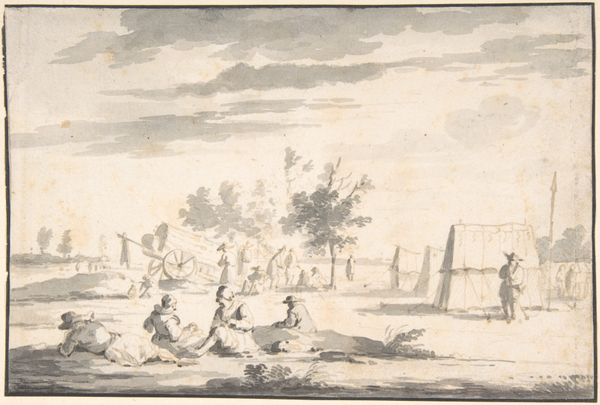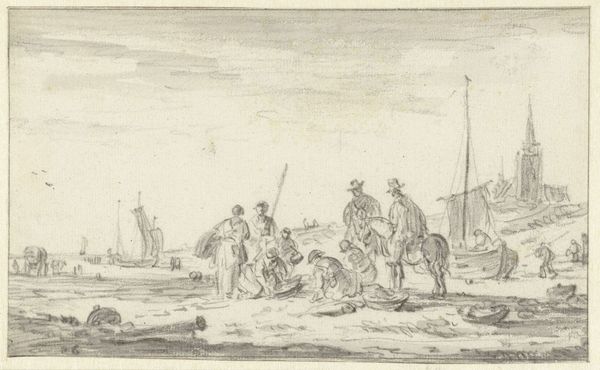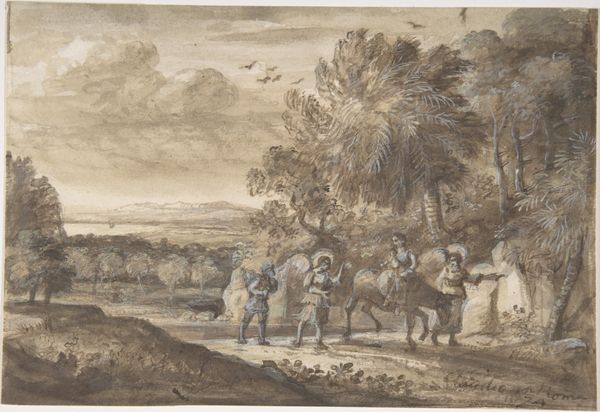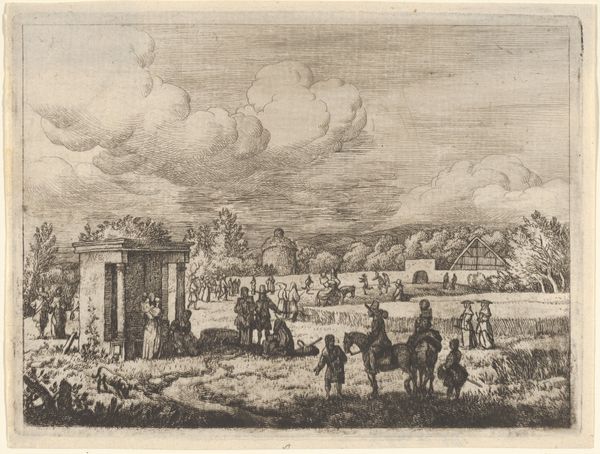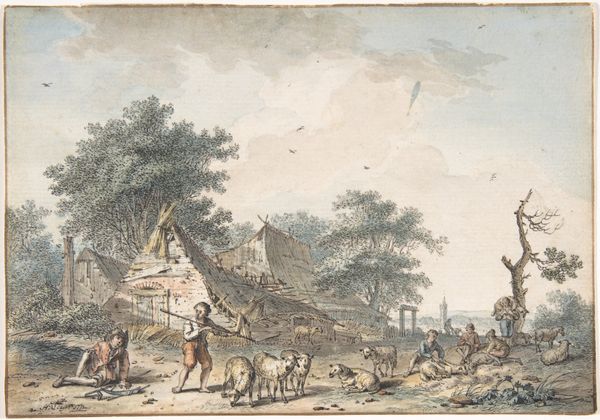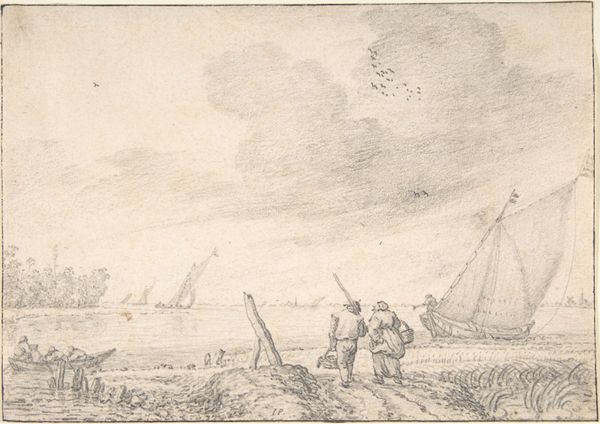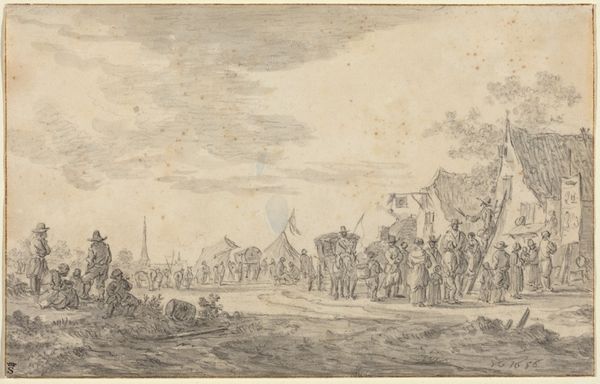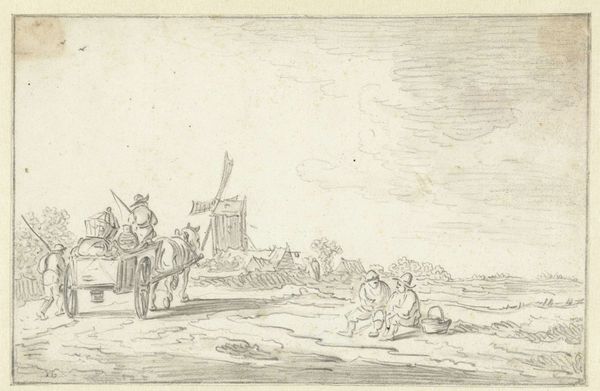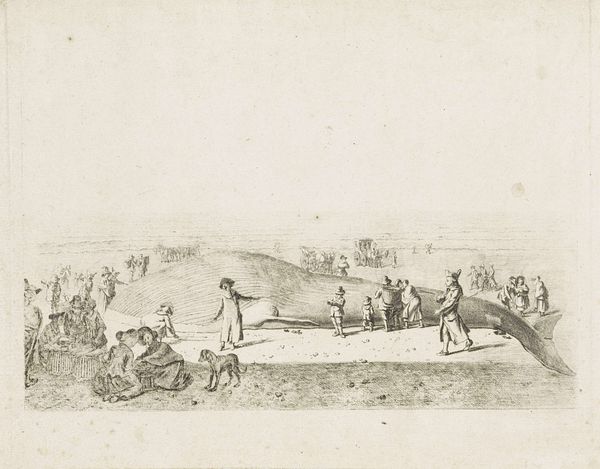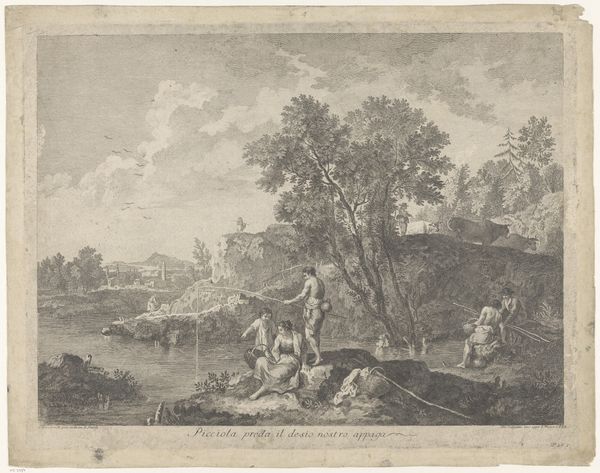
drawing, paper, ink
#
drawing
#
dutch-golden-age
#
landscape
#
paper
#
ink
#
genre-painting
Dimensions: sheet: 7 3/16 x 11 5/16 in. (18.3 x 28.7 cm)
Copyright: Public Domain
Curator: Here we have "Elegant Party on the Tafelberg," a drawing by Anthonie van Borssom, likely created sometime between 1624 and 1677. The artwork, rendered in ink on paper, now resides here at the Metropolitan Museum of Art. Editor: My first impression is the casual, almost theatrical, arrangement of figures across this gently sloping plane. It gives a snapshot into a bygone era. The tones are warm but a little unsettling somehow. Curator: It's an intriguing blend of genre painting and landscape, quite typical of the Dutch Golden Age. Note the elevated vantage point allowing a panoramic view. These were important demonstrations of civic pride during the Dutch Republic’s era of booming international trade. Editor: I can see that. The group is seemingly placed perfectly atop the edge between what looks like the center of social life, while nature surrounds them and spreads into the background of the drawing. What’s fascinating to me is the seemingly nonchalant presence of servants around the revelers, is it an accurate reflection of Dutch social life at the time, or an idealized depiction? Curator: Well, representations in art always navigate between accurate reflection and aspirational vision. There is almost certainly an element of idealization here. However, the increasing affluence of Dutch society in this period certainly did provide greater opportunities for leisure among certain segments of the population. What is especially worthy of consideration, from my point of view, is the very construction of public leisure through social divisions and colonialist practices that sustained those economies. Editor: And that awareness invites questions about who had access to these ‘elegant parties’, and what histories might be purposefully obscured. Were these parties exclusive gatherings where certain individuals, particularly women and people of color, were intentionally marginalized or completely absent from these events? Curator: Exactly! While seemingly innocent on the surface, this artwork invites us to probe into the undercurrents of privilege and power dynamics that defined that time, shaping not just who could partake in the elegance but also influencing what was deemed worthy of artistic representation. It prompts a deeper look into the societal values enshrined, as well as those sidelined. Editor: It also illuminates the necessity to contextualize the past. Even a piece so visually pleasing demands to be viewed through an intersectional lens that challenges traditional art-historical narratives. Curator: Indeed. And with new eyes. We often overlook how landscapes, then and now, participate in complex social and economic structures. Editor: Yes, I see these calm vistas through an ecological and ethical perspective, as a space of interaction between society and environment, where political agency has an undeniable role to play. Curator: Precisely, and to analyze them as reflections and active contributors to a network of historical processes.
Comments
No comments
Be the first to comment and join the conversation on the ultimate creative platform.
